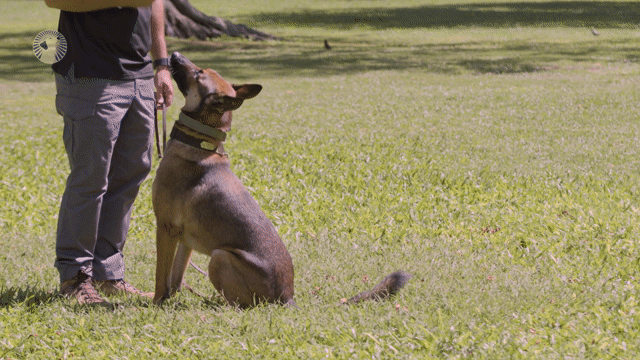How Do I Get My Dog to Stop Reacting to Other Dogs in the Street?
When it comes to dog psychology, it can be just as complicated as human psychology. Many people who own dogs and take them out on walks with them don't realize that their dog is in a totally different mindset when they're in the street. When you see your dog outside of your house, it can be hard to make sense of what they're thinking because canine body language is not nearly as easy to read as human body language.
Dog's ears perk up and they may go on high alert when another dog is within their sight. Dogs often feel threatened and protective if they see another dog in the street even if it's separated by a fence or gate! Many people who walk their dogs don't understand that this is definitely a situation that can lead to disaster if they aren't able to keep their dog under control.
"99% of the time, dog reactivity is a mix of human error and dog insecurity," Daniel explains. "And, dog insecurity exists because of human error, as well." In essence, you play a huge role in the reason why your dog reacts the way it does.
Understanding the Difference Between Playful and Aggressive Reactions
As you will learn in the Beacon Dog training course, dogs are primal creatures struggling to exist in a non-primal, civilized world. In the wild, dogs would not just run up to other dogs and start playing with each other. When you're walking your dog, it is important to know the difference between a playful reaction and an aggressive reaction. That's the key moment when things can go wrong in a second!
A "play bow" is what dogs do when they want to let other dogs know that they only want to play. This is easy to spot if you know what to look for. A play bow may include a dog's butt being up in the air, their front two paws on the ground, and their tail wagging from side-to-side or straight out behind them! In other words, they look as though they are doing a "handstand".
Most dogs will respond to a play bow by barking, and it is important not to mistake this for aggression. However, if your dog rears up on its hind legs with its paws in the air, this would be an aggressive gesture because your dog doesn't want to play - they are showing dominance over the other dog! If you're not sure whether the dogs are engaging in good or bad play, it is best to keep your dog on a leash or at least physically close enough that you can pull him or her away if necessary. Being proactive is always better than waiting until something bad has happened!
How to Prevent Aggressive Dog Reactions
The absolute best way to stop aggressive reactions before they start is to educate yourself about dog psychology. Beacon Dog offers a comprehensive program that teaches you the secrets to communicating with your dog in a way that they can understand. As Daniel explains:
"Keep your dogs on a leash. Teach your dogs to walk correctly. Use the right tools like prong collars. Do regular obedience sessions. And, have a better bond with your dog. Your dog will trust you as a leader."
If you can do all that, your dog will begin to look to you for cues about how it should react to other dogs in the street. When your dog sees that there is nothing to be worried about, they will begin to show a lot more interest in others dogs - which will lead to better walks and stronger social skills!
Useful Ressources

Problem-Solving Theories
Learn how to correct dog behavior problems (including food possessiveness and aggression) in order to make your life with a dog so much easier.

The Primal Power of Food
How to motivate your dog using food. Learn how to use food throughout your dog’s life to get the best out of them. Become an expert in motivating your dogs!

How to Apply a Prong Collar
Prong collars can be very useful training tools when you know how to use them. Here is a step-by-step guide on how to correctly use a prong dog collar.

The Basics of Dog Psychology
You love your dog, but do you really know what your pup is trying to tell you? Most people don't. Dogs have a complex language of their own, and if we want to learn how to communicate with them on a deep level, we need to understand this language better.

What is Good and Bad Dog Play?
The signs of good vs. bad dog play can help keep dogs from getting hurt or hurting others - and knowing the difference could save lives! Here's how to tell them apart.

Dog Aggression: Causes & How to Overcome It
Dog aggression is one of the most frustrating and common behavior problems in dogs. If your dog is exhibiting signs of aggression, it's important to consult with a behaviorist or trainer who can help you address the issue.

Are Prong Collars Dangerous? Everything You Need to Know
A prong collar, also known as a pinch collar, is an effective training device. The purpose of a prong collar is to deliver a sharp but painless pinch to the dog's neck when it misbehaves.

Herm Sprenger Prong Collars: Are They Good?
Herm Springer prong collars are used exclusively to train law enforcement dogs and for good reason. But, is the Herm Sprenger prong collar right for you?